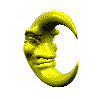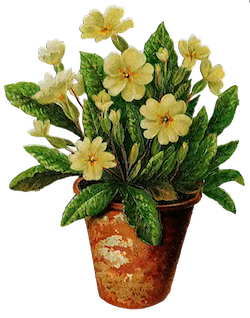BackgroundI think that attention is the central, underlying currency of the internet (either the modern one, or the internet in general) - it is not by chance that the core metrics are views and followers. Attention is highly contested, and those who work for fun or enthusiasm rather than profit and thus don't have the means to buy or generate attention for their works are often let standing. Modern social media promises attention, but usually works like a pyramid scheme: You have to spent attention and time to the social media, and most people don't get much in return - maybe a few clicks, but even feedback is rare: The social media is not directed to give you feedback or reactions to your art, but to turn your art into a commodity, a wallpaper for the social-media-room.
On the other hand, the internets promise for me is a place, where we can be creative and come into exchange with each other, sharing knowledge and developing a culture that might overcome the capitalist logic - the ideas of the
Situationists are a reference point for me in this regard, and projects like Incoanhyto (a platform for interactive fiction that allows the user to edit and create own stories that interact with what he reads) or the arcane cache (a blog for reviewing non-commercial, underground games) are my attempts to contribute to this direction.
I was also interested in doing an "exhibition" of graphical digital art for some time now - and this took shape when i stumbled on a link to Crash-Stops blog in the "Glitching Images with Audacity" Thread =). There were some great pictures, and I asked him for permission to do a digital exhibition (the fact that he uses libre licenses gave me a bit courage ;)) - he instantly agreed.
ProductionMy first step was to go through the artists tumblr, and save images that caught me eye. I repeated the process, and returned a few times to get things that sticked to my mind. Afterwards, I spent some time to view and "catalogue" the many files I had downloaded, and eventually came up with something, breaking down the images to 5 (maybe somewhat subjective) categories.
I wrote a short php-script that shows images from subfolders - this allowed me to experiment with the arrangement of the images easily. I heard a women from a museum in an interview some time ago, who said that the arrangement of pictures within an exhibition is a piece of art of its own - that one should be aware of tensions, of interactions between images and movies, and of the story told by pieces within a room and the follow-up of the rooms as whole, and I tried to do this. Wonder if one can tell ;).
I also experimented with the presentation of the images, and eventually ended up with big white frames that fill a whole monitor of a visitor - the idea is to give the impression of the single image, like when standing before a wall - as opposed to the tight galleries we know from social media, where small images melt into a big conglomerate. The image is scaled down when to big, but not scaled up - since the original works are of different size, a certain dynamic might come into play between different pictures. I muted the videos (they are all silent anyway) and activated autoplay to emulate the unique expression one encounters when walking into a running video installation within a "real" museum; a short disorientation, that I often found very pleasing :).
Writing the contextualization was a lot of work. I had for any room a thing in mind I wanted to say and that I thought interesting - but I thought that it would help the "legitimacy" and thus "acceptance" of the project if I quoted some famously smart people on every page with some cool and striking sentences; so I searched a quote (finding a good, pointed quote is sometimes surprisingly much work, especially since these famously smart people talked and wrote a lot!) for every page that I placed above my own texts - writing these also took me quite some while, and a few I did struggle with to hit the right tone, or being informative and interesting without being to blunt or self-centered, suffocating the exhibits - some took me several evenings to write; I hope I did alright with it in the end. After every text I finished (I worked through from Room 1 to 5), I revised the arrangement of the pictures, sometimes doing some rather big changes to fit the mood of the room or to create a more interesting succession.
At the end, I made the intro text and finished the digital museums design. I also created a short gif consisting of four different images - I wanted to emulate the "picking up" of short impressions of images when nearing or initially walking into an exhibition, where you see some images through open doors or at the edge of your sight - I had considered to somehow bake something for this into the navigation, but decided to rather make everything technically minimal.
My friend and flatmate did some proofreading, and after getting the go from Crash-Stop, the thing went public on Sunday evening :).
ConclusionI'm highly satisfied with the result; Crash-Stop was also happy with it, and the feedback I got from friends whom I showed the thing are overall very positive. Also, working on it was a lot of fun.
To create a bit of visibility, I used Mastodon/Lemmy/Reddit to do some promotion; from my traffic I can tell that there was a bit activity, similar to the spikes I get after posting a review there; but as you might have guessed from the text above, I'm not overly surprised, and the whole project was more about creating a room where a in-depth interaction is possible, rather than quantitative visibility - still, if you have recommendations about how and were to spread such projects, I'll willingly take it ;).
I put my part of the project also under a free license - maybe somebody else has interest in picking the concept up? (Will probably upload and link the php-script in the next few days). Also, if anyone has recommendations about artists, shoot

.




 Posts & Arts: 63/1k.beats
Posts & Arts: 63/1k.beats

 ~ Inconvenience is counterculture ~
~ Inconvenience is counterculture ~ 










 Author
Author












